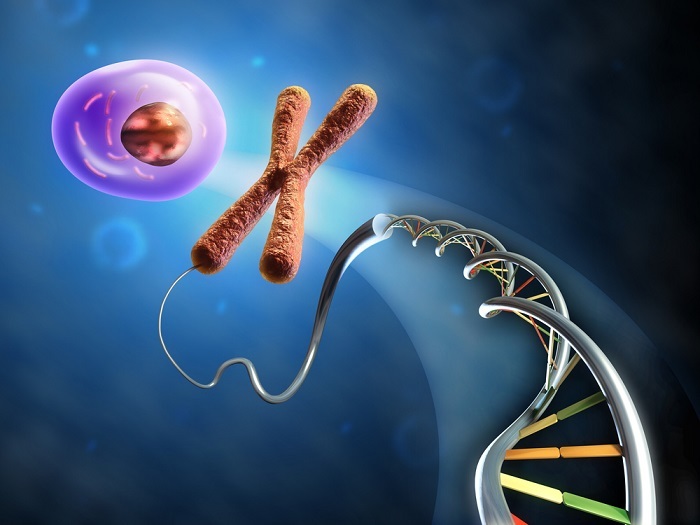
 Data Structure
Data Structure Networking
Networking RDBMS
RDBMS Operating System
Operating System Java
Java MS Excel
MS Excel iOS
iOS HTML
HTML CSS
CSS Android
Android Python
Python C Programming
C Programming C++
C++ C#
C# MongoDB
MongoDB MySQL
MySQL Javascript
Javascript PHP
PHP
- Selected Reading
- UPSC IAS Exams Notes
- Developer's Best Practices
- Questions and Answers
- Effective Resume Writing
- HR Interview Questions
- Computer Glossary
- Who is Who
What is DNA Typing and Its Significance in Forensic Science
Introduction
DNA is the main hereditary material found in all organisms. It is a double stranded macromolecule and is found in the nucleus of the cell. DNA is composed of nitrogen bases namely adenine, guanine, cytosine and thymine, phosphate group and sugar. It helps in the transmission of characters from parents to offspring.

DNA typing is also called DNA fingerprinting, genetic fingerprinting or DNA profiling. It is a common technique that can identify slightest differences in the DNA. DNA typing has been used in forensic investigations, establishment of paternity, disease diagnosis and establishment of ancestry.
Principle Behind DNA Profiling
Variations can be seen in coding and non-coding regions which is normal. Sequence variations can be seen when there is a difference in the sequence at a specific location or loci on DNA. Length polymorphisms occur when there is a variation in the length of DNA at a particular location. These variations in sequences as well the length of the sequence varies between individuals. These variations can be used in the identification of a criminal during an investigation.
Basic Steps Involved in DNA Profiling
The procedure involves different steps which are as follows -
DNA Extraction
RFLP Analysis
PCR
Y Chromosome Analysis
Mitochondrial DNA Analysis
DNA Extraction
For the typing process, DNA has to be extracted and purified from the samples like blood, saliva or other body fluids.
The basic procedure involves the lysis of cell which releases DNA from the nucleus along with cell debris.
This cellular debris can be removed by precipitation followed by centrifugation because of which free cellular DNA is obtained free of contaminants.
The most common method used for the extraction of DNA is the organic methods which involves the use of organic chemicals like SDS, phenol and chloroform.
Once the DNA is extracted it is purified and is used for further analysis.
Restriction Fragment Length Polymorphism (RFLP)
DNA typing is based on sequence polymorphism, slight sequence difference between individuals 1bp in every 1000bp on average. Each difference from the prototype human genome sequence occurs in some fraction of the human population, every individual has some differences. Some of these changes affect the recognition sequence for restriction endonuclease resulting in the variation in the size of the DNA fragment produced by digestion with a particular enzyme. These variations are known as restriction fragment length polymorphism.
Polymerase Chain Reaction (PCR)
If the sequence of at least the flanking parts of DNA segment is to be cloned, we can hugely amplify the number of copies of that DNA segment, using the polymerase chain reaction, a process conceived by Kary Mullis in 1983. The amplified DNA can be cloned directly or used in a variety of analytical processes. This technology is highly sensitive, and it can detect and amplify as little as one DNA molecule in almost any type of sample.
The circular DNA found in the mitochondria is called the mitochondrial DNA. It is an extra nuclear DNA and was the first human genome to be sequenced. It is mostly inherited from the mothers in animals and some plants.
Y- Chromosome Analysis
Just like mitochondrial DNA is maternal in inheritance Y chromosome is inherited from the father, since Y chromosome is found in males. Y chromosome analysis is used wen genomic DNA obtained from a site is highly degraded. Y haplotype reference database has been created for criminal identification and investigation.
Significance of DNA Typing in Forensic Science
Traditionally, one of most accurate method for placing an individual at the scene of the crime has been a fingerprint. With the advent of recombinant DNA technology, a more powerful technique called DNA typing is now available.
However, DNA typing using RFLP require large DNA sample which is not possible every time. Therefore, there was a requirement of more sensitive methods which led to focus on PCR ad STRs.
PCR amplification allows investigators to obtain DNA fingerprints from less than 1ng of partially degraded DNA, an amount that can be obtained from single hair follicle or samples that might be months or even many years old.
Convenient kids have been developed commercially that allow the amplification of 16 or more STR loci in one test tube. These multiplex STR kits have PCR primers unique to each locus. These kits are very unique in establishing the human identity. When good DNA profiles are available, the chance between an accidental match between two individuals is less than 1 in 1018.
Conclusion
DNA typing has been used to both convict and acquit suspects and in other cases to establish paternity with an extraordinary degree of certainty. The impact of these procedures on court cases continue to grow as the standards are improved as international databases grow. Even very old mysteries which are unsolved till today can be solved.

